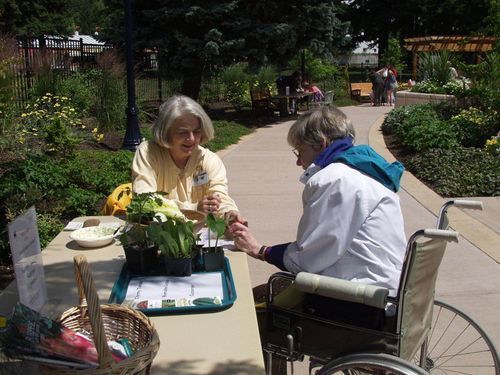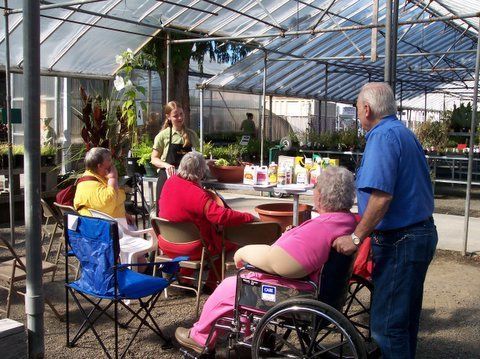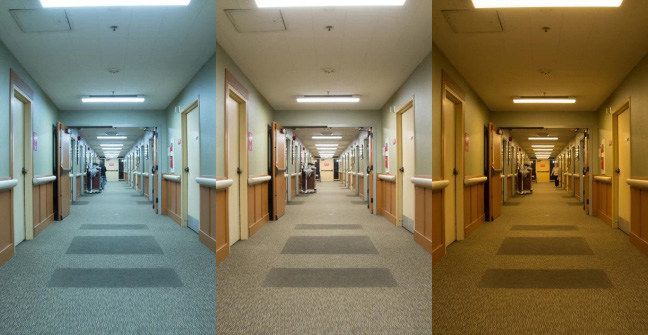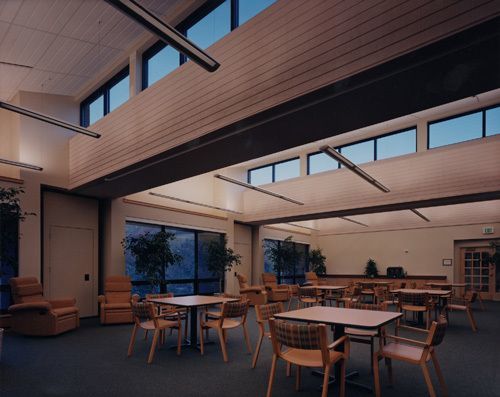"I cannot endure to waste anything as precious as autumn sunshine by staying inside. So I spend almost all the daylight hours in the open air."
Nathaniel Hawthorne
The non-visual aspects of light are important to our general health and well-being and also play an important role in support of our immune systems. These include:
- Light through our eyes. This is a potent stimulus for regulating circadian, hormonal, and behavioral systems, and it keeps our body synchronized to the light/dark cycle of light. Experiencing this light/dark rhythm is important to promote nocturnal sleep and alertness during the day.
- Sunlight on our skin. It synthesizes vitamin D3, which maximizes the utilization of calcium needed to maintain bone health and muscle strength. It is now recognized that vitamin D3 also has an anti-cancer effect which can reduce cancers of internal organs.
More about light through the eyes: We are all familiar with the rods and the cones in the human eye. However, in 2002, a special cell in the retina, the intrinsically photosensitive retinal ganglion cell (ipRGC), was discovered, which receives and transmits to the body clock. (Berson et al, 2002 Science, Vol 295). Research prior to this discovery understood that certain wavelengths of light influenced our circadian rhythm. The discovery of the ipRGC was the missing piece of the puzzle. We now understand the importance of experiencing daylight during the day, especially from 8 – 10 am, and darkness at night for our overall health and wellbeing.
As people age, they may experience less daylight due to changes in mobility. Daylight has been the missing element in senior housing for a long time in the United States. Since the scientific discoveries in 2001 to 2003, which identified the special cell in the eye that receives and transmits light to the human body-clock and the wave length to which it is most sensitive, we have recognized the importance of making certain that older people experience the high light levels and changing colors of daylight (cool during the day and warm at sunset and then darkness at night) in order to maintain a healthy circadian rhythm (keeping the sleep/wake cycle synchronized with the night/day cycle of light).
Adequate and consistent daylight exposure must be factored into the daily routine of care center residents. This can be provided by bringing daylighting into the common areas, i.e. dining room, activity centers, and lounges of care facilities, or by having planned activities outdoors.

Plan regular activities where residents spend time outdoors.
Before electric light was developed, all buildings were designed to take advantage of daylight. After that time, electric light was the chosen source, and reliance on daylight was abandoned, which caused unintended consequences to residents’ circadian rhythms. Access to daylight should be a right for every resident living in long-term care.
Fluorescent lighting was more energy efficient than incandescent light sources, so it became the dominate light source. The color temperature of fluorescent light sources was static, no change from day to night, whereas natural daylight changes in color and intensity throughout the day to darkness at night. Some fluorescent fixtures were dimmable, which added cost to the installation, so very few care centers had that feature of decreasing the intensity. So, the same color and intensity of the lighting system was present day or night in corridors and common areas.
The development of light-emitting diodes (LED) lighting was much more energy efficient and, due to the small size of the diodes, could provide features of both intensity control and color tuning, which could more closely replicate the changing color of daylight in the sky.
Some care facilities are now starting to install LED lighting systems to reduce energy use. Other care facilities have installed tuned LED systems that are controlled by a computer which followings the lighting protocol that is programmed to control the lighting system so that light in the building changes color and intensity throughout the day to replicate what is happening in the sky. Case studies are continuing to test to see if these installations are successful in synchronizing circadian rhythm. The tunable lighting installed in the ACC Care Center’s corridors did not provide the intensity of light required during the day for circadian rhythm. However, sleep improved at night when the lights turned a warm buttery amber color and dimmed down to 20%.
Most of these installations simply replaced fluorescent fixtures on a one-for-one basis, to avoid any additional electrical wiring, assuming that the LED would be bright enough. Another problem was the failure to employing the basics of good lighting design, which includes 1) understanding aging vision, and 2) insuring that the wall and ceiling surfaces provide good light reflectivity. Appropriate light reflective value (LRV) in facilities for senior recommends the following values: Ceiling: 80 – 90 LRV, Walls: 60 – 80 LRV. (ANSI/IES RP-28-20 Lighting and the Visual Environment for Older Adults and the Visually Impaired). The higher the number, the more light will be reflected.
To replicate the daily cycle of light, we need to provide high levels of cool light in the morning, gradually warming during the afternoon, and warm and lower light levels at night, various protocols have been used, but there is no agreement as yet in the scientific community. My vote is: Mother Nature knows best! We need to go back to having abundant daylighting of our buildings. Windows may provide some daylight, but the viewer must be looking toward or to the side of the window and be within 3m of the window to have enough light for a circadian response. (K.Konis, 2018 Field evaluation of the circadian stimulus potential of daylit and non-daylit spaces in dementia care facilities, 2018 Field evaluation of the circadian stimulus potential of daylit and non-daylit spaces in dementia care facilities) To serve the greatest number of residents, light from overhead is best, since a greater number of the ipRGC are located in the lower region of the retina. Overhead daylight options include diffused skylights, or a series of clerestory windows (sawtooth design).
Sunlight on the Skin

Glazing on greenhouses for plants also transmits the UVB needed for vitamin D3 synthesis in the skin.
Bringing daylight into a care center addresses the necessary light through the eyes for circadian entrainment. However, residents must go outside on a regular basis to get their dose of vitamin D3 from direct sunlight exposure on the skin.
Calcium and vitamin D are essential to maintaining healthy bones throughout life. Osteoporosis, the most common disease of the bones, characterized by a decrease in bone mass and density, is often called the silent epidemic. Worldwide, osteoporosis afflicts an estimated one-third of women aged 60 to 70, and two-thirds of women aged 80 or older. Vitamin D deficiency can be prevented by sun exposure.
A Japanese study of 258 stroke patients 65+ years old, half of which were exposed to sunlight on their face and hands for 15 minutes per day for a year, and half (control group) of whom maintained their normal activities without any specific activity for sunlight exposure, found that hip fractures significantly decreased by 84% in the sunlight-exposed group. Also, bone mineral density increased by 3.1% in the sunlight-exposed group and decreased 3.3% in the control group (Sato Y, Metoki N, Iwamoto J and Satoh K. Amelioration of osteoporosis and hypovitaminosis D by sunlight exposure in stroke patients. Neurology 2003; 61:338-342).
Most window glass blocks the ultraviolet light need for vitamin D synthesis, so plan for residents to go outdoors without sunscreen, make-up, or lotions which might include sunscreen, for 15 minutes per day exposing at least hands, forearms and face. It is best to avoid the two hours before or after 12:00 noon.
It is important to understand that both nocturnal sleep (promoted by healthy circadian rhythms) and high levels of circulating vitamin D3 are needed to support our immune system.





